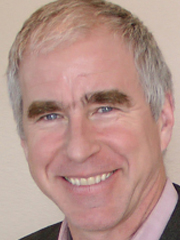Chloride mass balance for recharge estimation
Funding: DOE/NABIR 1995-1997.
Collaborators: Ellyn Murphy, Pacific NW National Lab.
Project Summary: Estimation of recharge to water tables in semi-arid ecosystems is often addressed through measurement of the chloride concentrations in soilwater and comparison with the effective (dry+wet deposition) concentration in annual precipitation: a ten-fold increase in soilwater concentration implies that 90% of precipitation evapotranspired and so 10% of precipitation remained in the subsurface as estimated recharge. Application to Southeastern WA state is in (1).
This “Chloride Mass Balance” method is based on a number of alarming and controversial assumptions, including quasi-steady state precipitation and chloride deposition as well as infiltration rate and therefore subsurface velocities governing transport. Our group has derived equations needed to simulate vertical infiltration of chloride in the context of transient chloride mass balance, i.e., when chloride deposition and/or precipitation rates vary on large time scales (2). The equations can be used to estimate timings of changes in surface ecology or land use (when precipitation is constant) or historical precipitation rates (when surface ecology is constant) or a combination of both. We have reconstructed the arrival of tillage (for attempted wheat growing) in SE Washington state at the beginning of the twentieth century, as well as the 17 year annual precipitation on the Akrotiri peninsula in Crete (2, figure shown above) from soilwater chloride data.
Important papers on the topic:
1. Murphy, E. M., T. R. Ginn, and J. L. Phillips. Geochemical estimates of recharge in the Pasco Basin: Evaluation of the chloride mass-balance technique, Water Resources Research, 32:2853-2868, 1996.
2. Ginn, T. R., and E. M. Murphy. Generalized chloride mass balance: Forward and inverse solutions for 1-dimensional tracer convection under transient flux, Water Resources Research, 33:2065 2080, 1997.






